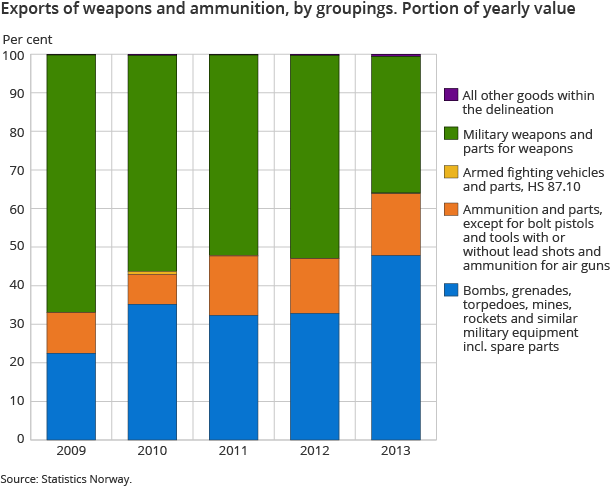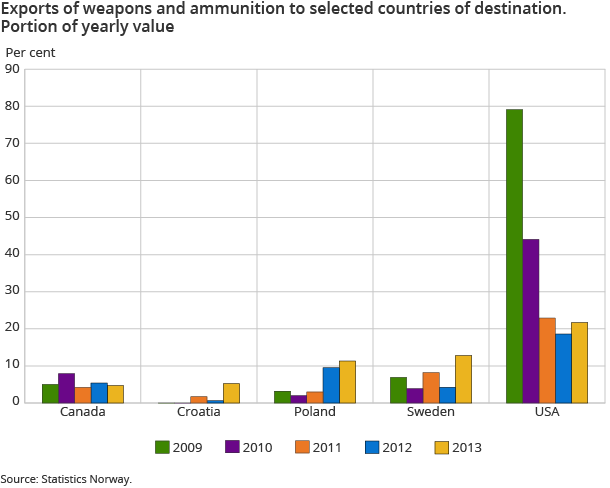Norwegian exports of weapons 2009-2013
Drop in export of weapons
Published:
The value of Norwegian exports of military equipment dropped by over NOK 400 million in 2013, to a total of about NOK 2.1 billion. Weapon exports have fallen every year since their peak in 2008. The group military weapons and parts for weapons decreased the most, down NOK 580 million.
- Series archive
- Exports of weapons
Based on customs declarations, Norwegian exports of military equipment amounted to almost NOK 2.1 billion in 2013. Bombs, grenades, torpedoes, mines, rockets and similar equipment were the largest group and amounted to over NOK 1 billion in 2013. This is the first time since 2004 that this group has been the largest. Exports within this group increased by NOK 178 million.
Note that the figures presented in this article are based on reported commodity exports of munitions. These do not take into account any incorrect reporting or illegal trade in weapons, which may be substantial in some countries. This makes it difficult to comment on Norway’s actual position in the world market.
Increase in exports to USA
The three largest receivers of Norwegian weapons in 2013, in terms of value, were the USA, Sweden and Poland. Exports to the USA increased by NOK 79 million from 2012 to 2013 and amounted to NOK 567 million. The USA has long been the largest buyer of Norwegian weapons, and 2013 is the first year since 2008 that these exports increased. The value of weapons to Sweden amounted to NOK 334 million, while the corresponding figure for Poland was NOK 295 million. This is an increase of NOK 223 million and NOK 47 million respectively.
The largest decrease in weapons exports is found for Chile and Switzerland, which fell NOK 299 million and NOK 220 million respectively. Exports to these countries amounted to NOK 0.5 million and NOK 90 million in 2013. The weapons trade with Chile has traditionally been low, but peaked in connection with a new agreement in 2012. Trade in weapons with Switzerland peaked in 2011 and 2012, but this high level has now fallen.
Contact
-
Jan Olav Rørhus
-
Øyvind Hagen
-
Statistics Norway's Information Centre


